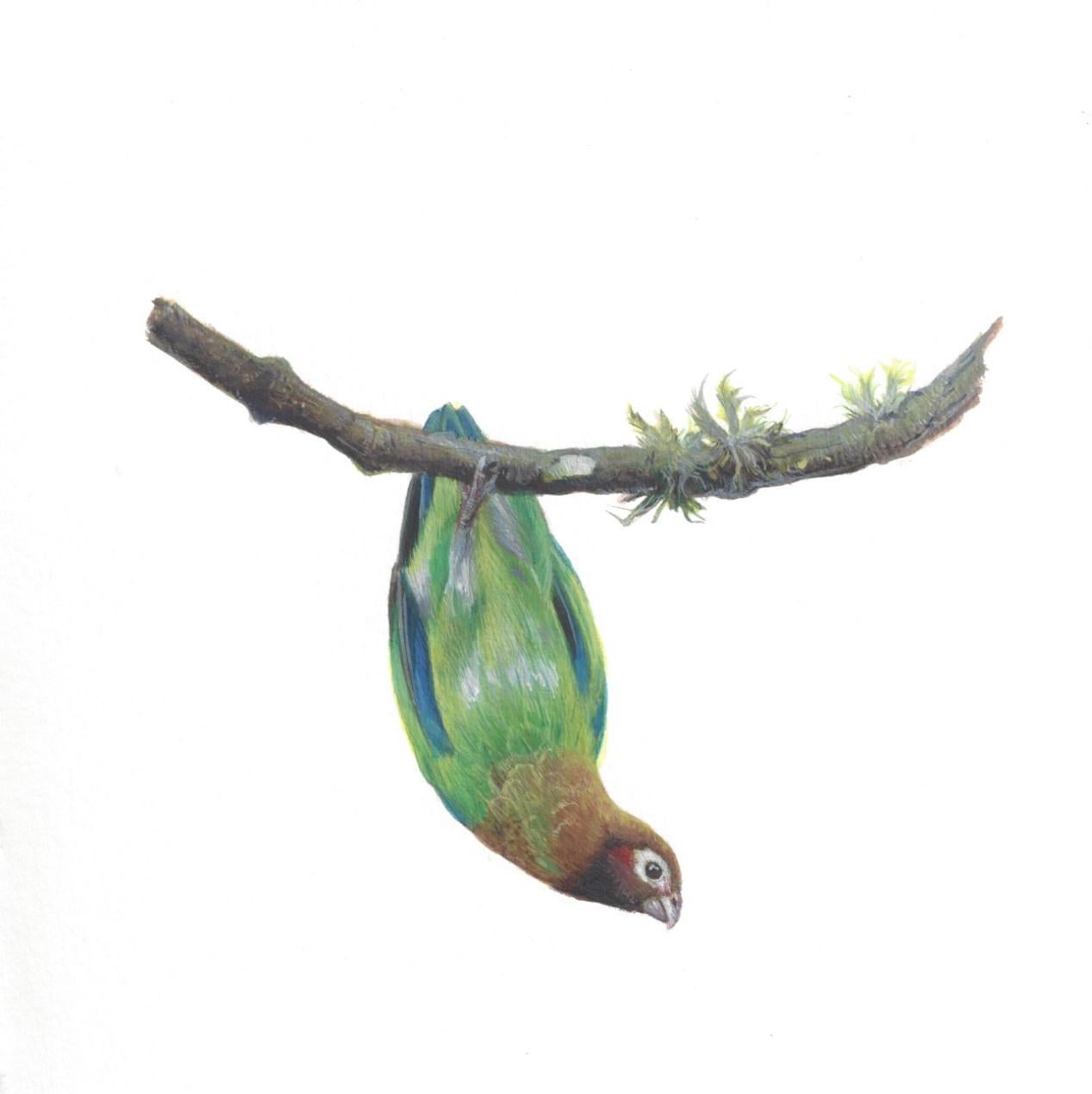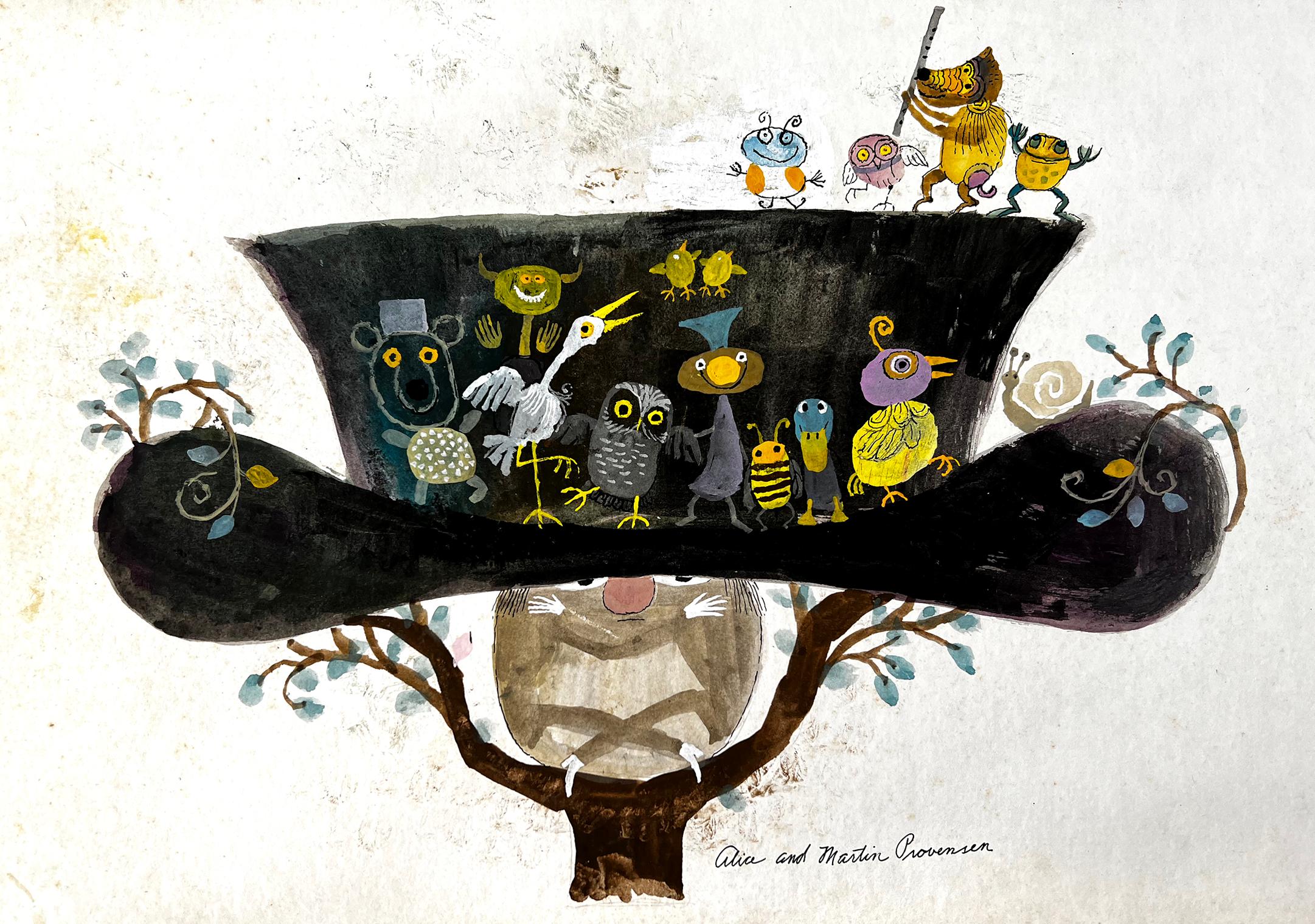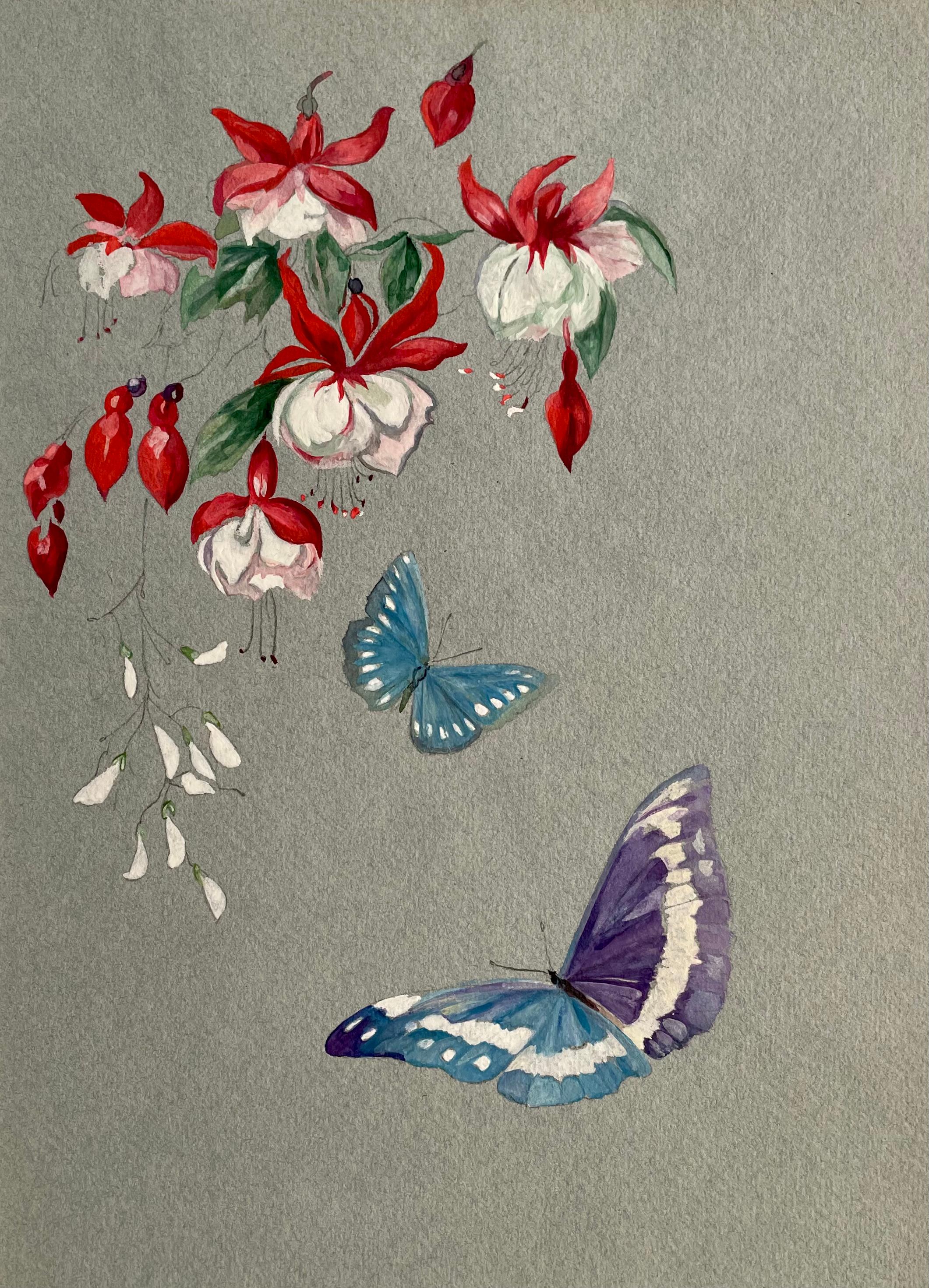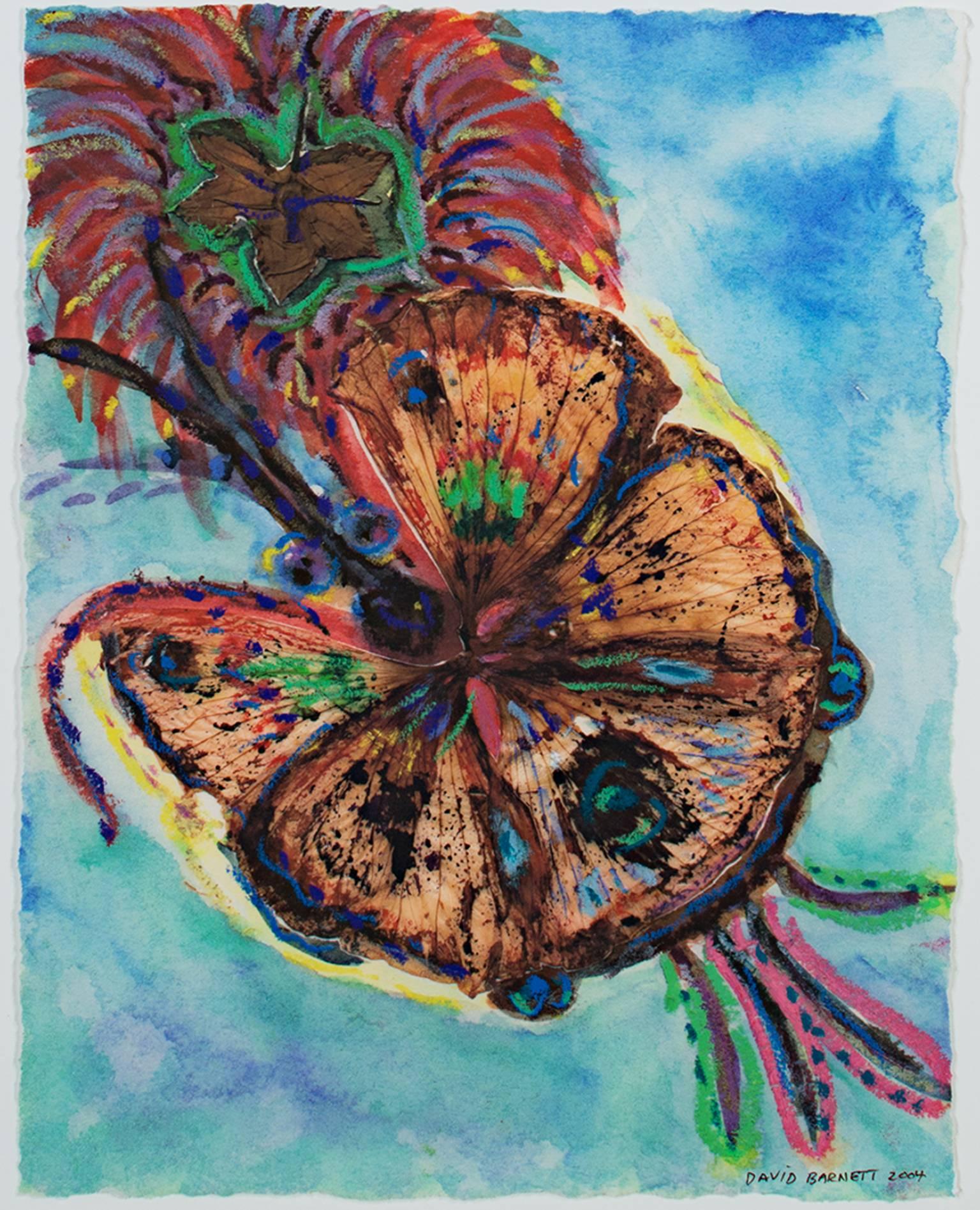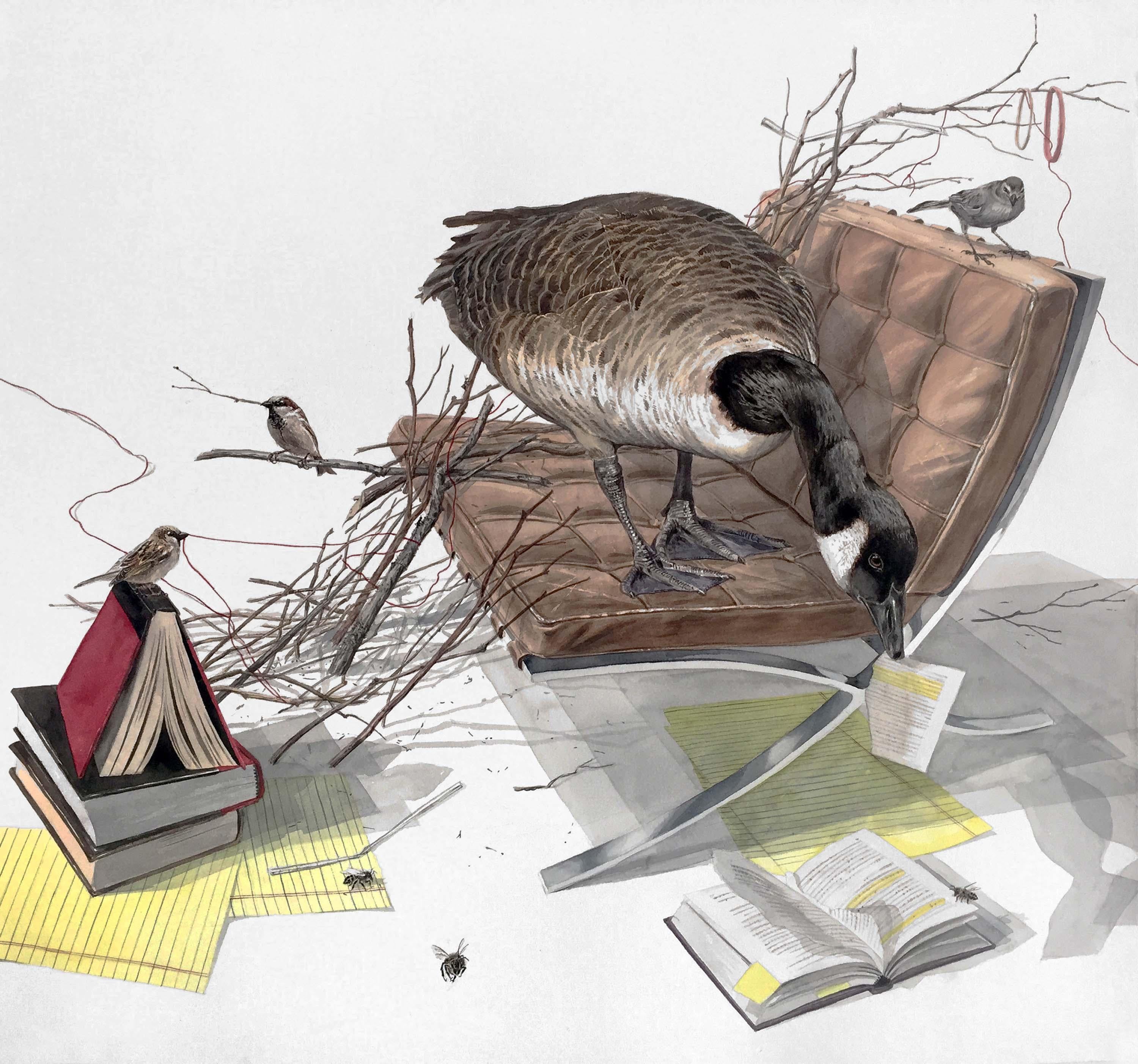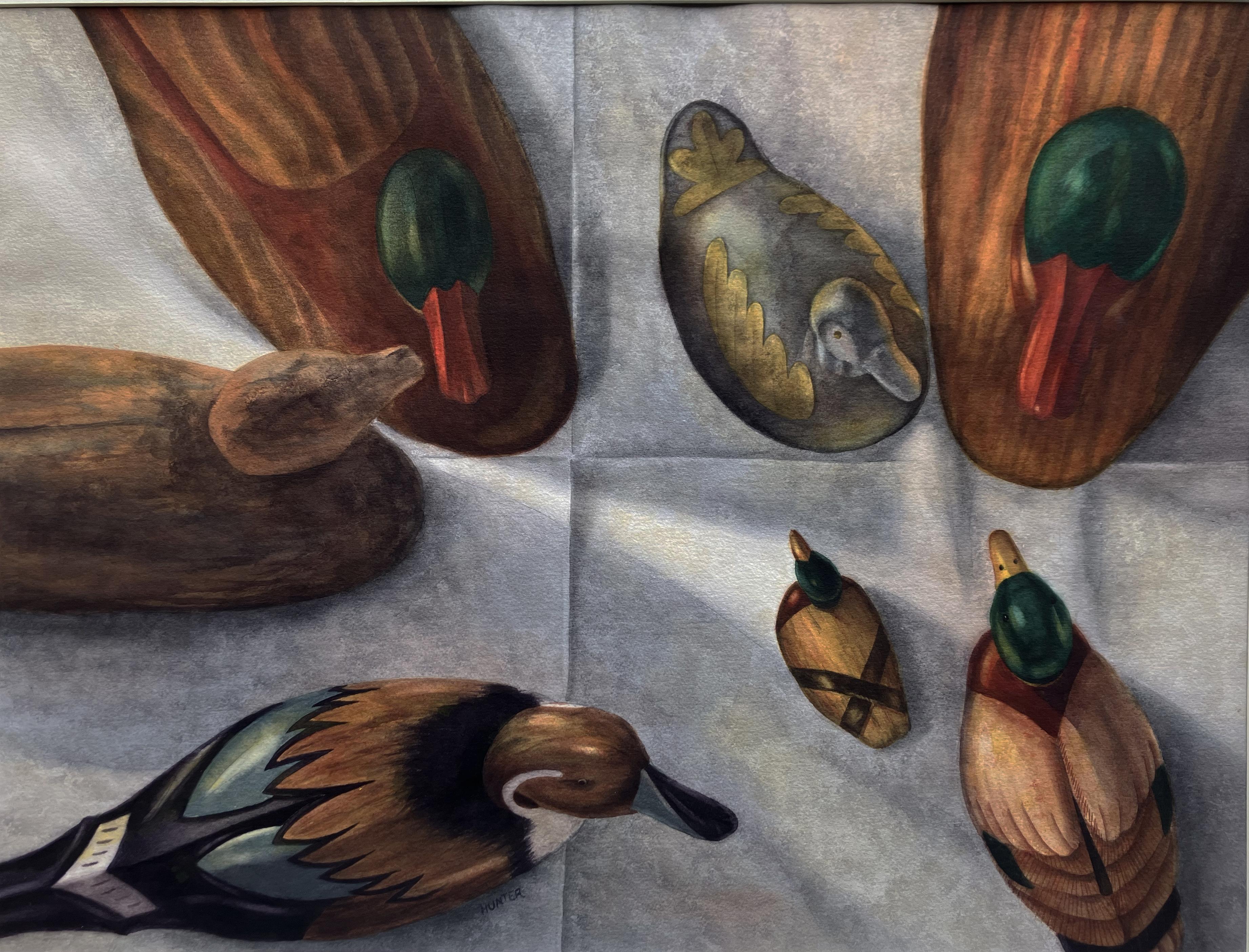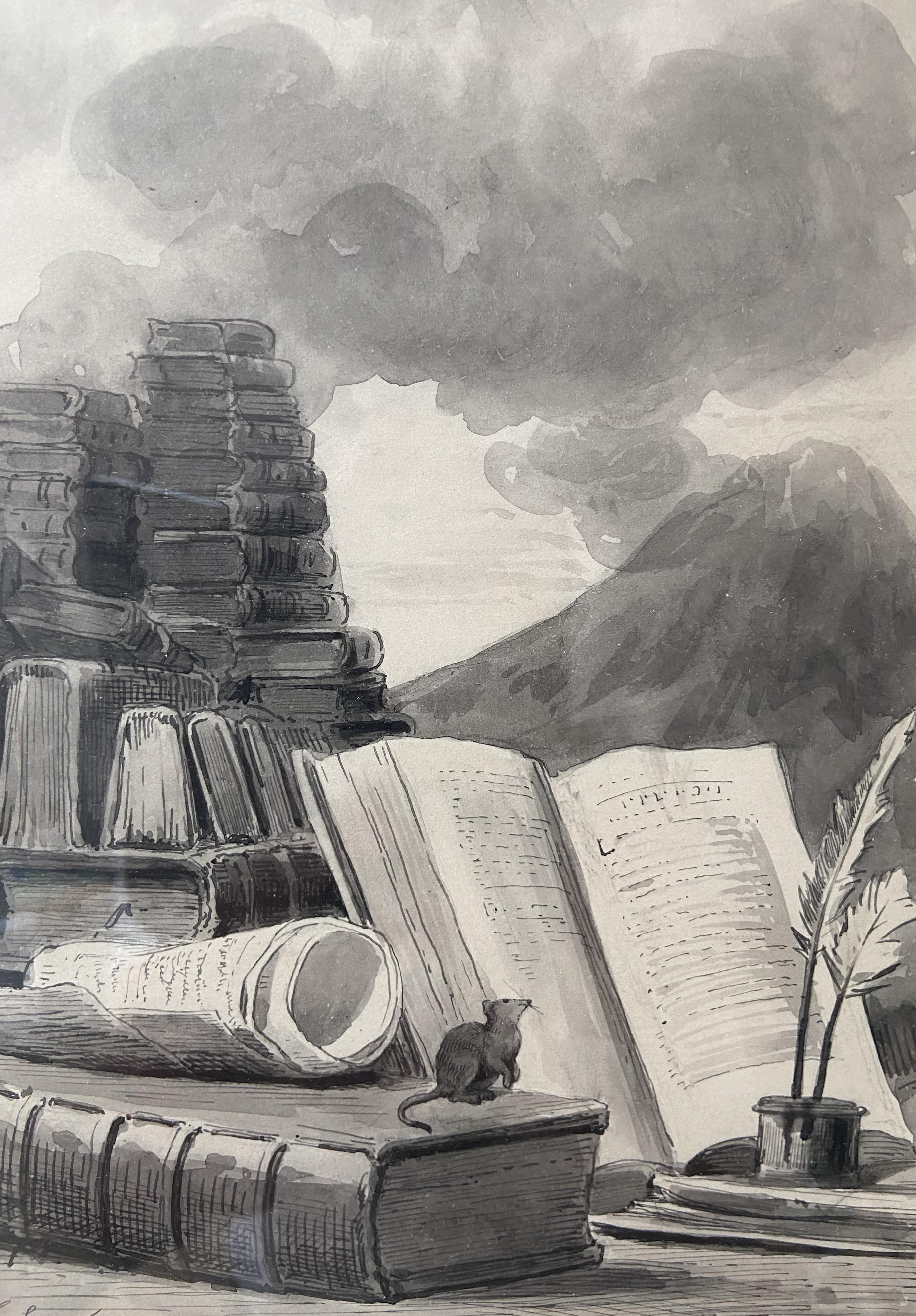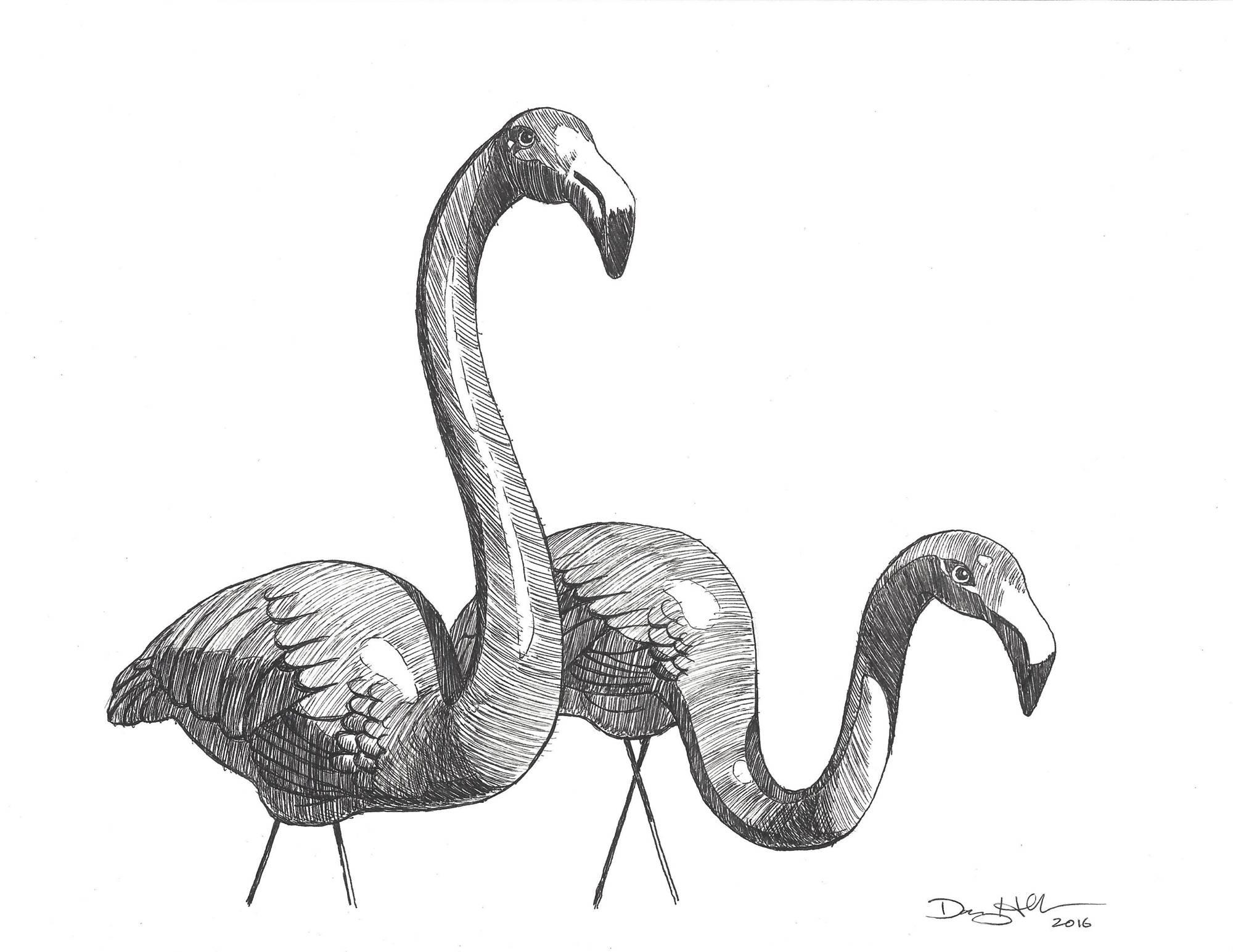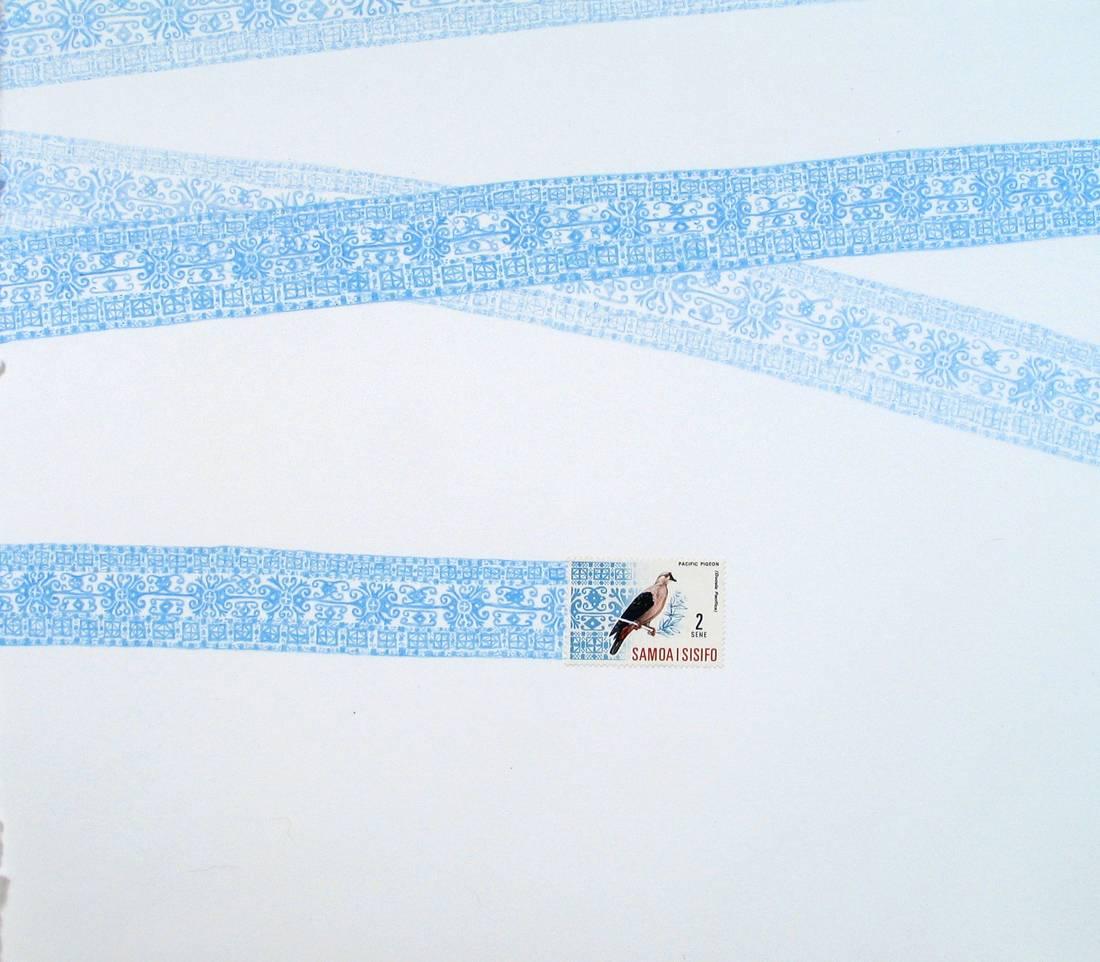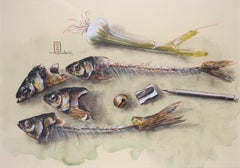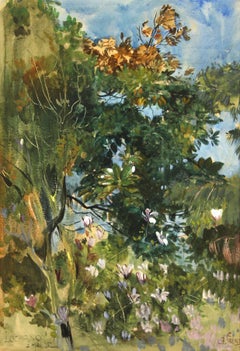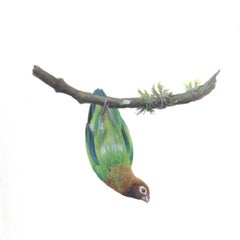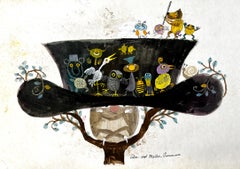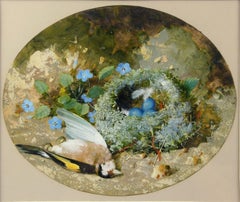
Still life with dead goldfinch - The mystic blue transcends death -
View Similar Items
Video Loading
Want more images or videos?
Request additional images or videos from the seller
1 of 6
William CruickshankStill life with dead goldfinch - The mystic blue transcends death -about 1890
about 1890
About the Item
- Creator:William Cruickshank (1848 - 1922, English)
- Creation Year:about 1890
- Dimensions:Height: 8.27 in (21 cm)Width: 9.65 in (24.5 cm)
- Medium:
- Movement & Style:
- Period:
- Condition:The drawing is in a very good condition, the frame lightly rubbed.
- Gallery Location:Berlin, DE
- Reference Number:1stDibs: LU2438211895222

About the Seller
5.0
Vetted Seller
These experienced sellers undergo a comprehensive evaluation by our team of in-house experts.
Established in 2014
1stDibs seller since 2023
7 sales on 1stDibs
Typical response time: 7 hours
More From This SellerView All
- Still life with fish bones, pencil and pencil sharpenerLocated in Berlin, DEManfred K. Schwitteck (*1948), Still life with fish bones, pencil and pencil sharpener, 1992. watercolor over pencil on handmade paper, 31.5 x 45 cm (visible size), 47 x 61 cm (frame...Category
1990s Surrealist Still-life Drawings and Watercolors
MaterialsWatercolor, Pencil
$418 Sale Price20% Off - Still life with fish bones and champagne corks / - Behind still life -Located in Berlin, DEManfred K. Schwitteck (*1948), Still life with fish bones and champagne corks, 1992. watercolor over pencil on handmade paper, 31.5 x 45 cm (visible size), 47 x 61 cm (frame), signed...Category
1990s Surrealist Still-life Drawings and Watercolors
MaterialsWatercolor, Etching
- Plant Impression in Locarno - Floral Crescendo -Located in Berlin, DEAlexander Frenz (1861 Rheydt - 1941 Düsseldorf). Plant impression in Locarno. Gouache and watercolour. 35 x 23,5 cm (visible size), 49,5 x 38,5 cm (fra...Category
1890s Impressionist Landscape Drawings and Watercolors
MaterialsWatercolor
$802 Sale Price20% Off - Clay jug on a bench - The essence of the clay jar revealed by the sunlight -By Hans Richard von VolkmannLocated in Berlin, DEHans Richard von Volkmann (1860 Halle (Saale) - 1927 ibid.), Clay jug on a bench. Pencil and Watercolour on paper. 20 x 26,7 cm (visible size), 37 x 45 cm (frame), dated and monogrammed lower left "Februar 1890 - HR. V. V." - Minimally tanned. Framed behind glass in a passepartout. About the artwork Using the technique of his early youth - pencil and watercolour - Hans Richard von Volkmann depicts a still life. However, this is not a conventional indoor still life, but an open-air depiction, painted outdoors and not in the studio. It is therefore an open-air painting, characteristic of von Volkmann's oeuvre, which could have been painted in the Willingshausen colony of painters, where open-air painting was programmatically practised there and the artist stayed there that year. And indeed, this painting is a manifesto of open-air painting. Von Volkmann demonstrates that leaving the studio for the light of nature leads to an entirely new quality of art. To prove this, he uses the genre of still life, which can be described as the studio subject par excellence. Moreover, light plays an essential role in the classical still life. It is the real protagonist of the still life. And it is precisely this moment, essential to the still life, that von Volkmann exploits to demonstrate the potential of plein-air painting: He presents the objects as they appear in the sunlight. The date of February and the bare branches in the foreground make it clear that this is a clear winter day in bright sunlight. The delicate plant in the foreground casts a clearly defined shadow, as does the jug. However, the shadow is most pronounced on the jug itself: The underside of the handle appears almost black, making the top, and therefore the jug itself, shine all the more brightly. The shining of the objects in the sunlight is also visible on the bench. As complementary phenomena to the shadow zones, light edges can be seen on the boards of the seats and the upper foot of the bench shines entirely in the light. To achieve this intensity of light, von Volkmann activated the bright white of the painting ground. By depicting the objects in glistening sunlight, von Volkmann demonstrates that this quality of light is only to be found outdoors. And this light leads to a new way of looking at the objects themselves. The jug on the bench seems like an accidental arrangement, as if the artist had stumbled upon this unintentional still life and captured it with fascination. And in this fascination there is a moment of realisation that refers to the objects themselves. It is only when they shine brightly in the sunlight that their true nature is revealed. In this way, sunlight allows the objects to come into their own, so to speak. Sunlight, which is not present in the studio, gives the still life an entirely new dimension of reality, which is also reflected in the colours interwoven by the sunlight: The bench and the jug stand in a harmonious grey-pink contrast to the green of the implied meadow. The emphasis on the jug as the central subject of the picture also implies that the watercolour has not been completed. This non finito inscribes a processuality into the picture, making it clear that something processual has been depicted, the temporality of which has been made artistically permanent. This is why von Volkmann signed the painting and dated it to the month. About the Artist Von Volkmann made his first artistic attempts at the age of 14. He painted many watercolours of his home town of Halle. This laid the foundation for his later outdoor painting. In 1880 his autodidactic beginnings were professionalised with his admission to the Düsseldorf Art Academy. There he studied under Hugo Crola, Heinrich Lauenstein, Johann Peter Theodor Janssen and Eduard von Gebhardt until 1888. Von Volkmann then moved to the Karlsruhe Academy, where he was Gustav Schönleber's master pupil until 1892. In 1883 he came for the first time to Willingshausen, Germany's oldest painters' colony, at the suggestion of his student friend Adolf Lins...Category
1890s Naturalistic Still-life Drawings and Watercolors
MaterialsWatercolor
- Study with Torso, Hands, and Umbrella - The characteristic of the inconspicuousLocated in Berlin, DEPaul Friedrich Meyerheim (1842 Berlin - 1915 ibid.). Sketch of a female torso with hands and an umbrella. Pencil on paper, 27.5 x 22.5 cm (visible size)...Category
1890s Realist Figurative Drawings and Watercolors
MaterialsPencil
- Vigilant Fox - The psyche of the fox -Located in Berlin, DECarl Friedrich Deiker (1838 Wetzlar - 1892 Düsseldorf). Vigilant fox. Pencil drawing on brown paper, 18 × 29.5 cm (inside measurement), 31.5 x 43.5 cm (mount), signed and dated "Deiker [18]54" at lower right. - a little bit stained, with a light water stain at lower right About the artwork Carl Friedrich Deiker's consummate ability to depict animals is already evident in this early work. He brought a whole new psychological dimension to animal painting, so that one could literally speak of animal portraits. The naturalistic appearance of the fox alone makes it seem alive. Every strand of muscle, even every hair, is captured, which requires an intensive artistic study of animal anatomy and physiology. But the fox's real liveliness comes not from its natural appearance, but from its internal movement: Stretched out, it has been brought out of rest. It turns around and, with its ears pricked up, looks intently in the direction from which it has seen something. His mouth is slightly open and his pointed teeth are bared, as if he were growling. Tension gradually takes hold of his whole body. While the hind legs were still in a relaxed position, closely observed by Deiker, one front leg was already raised, ready to begin a rising movement. The fox seems so alarmed with all its senses that one gets the impression that, at any moment, its tail will move jerkily and the animal will jump up. While wild animals have traditionally been portrayed as beasts or anthropomorphised, often for caricatural purposes, Deiker explores their inherent nature by attempting to capture their psychic impulses. The wild animal is neither bestial nor human, but a creature in its own right, valued by Deiker for its own sake. In this way, he brought the dignity of the animal into representation and raised animal painting to a whole new artistic level. About the artist Carl Friedrich Deiker was the son of the drawing teacher Christian Friedrich Deiker and the younger brother of the animal painter Johannes Deiker. In addition to the family art lessons, Christian Friedrich shared a studio with his brother Johannes at Braunfels Castle, Deiker attended the drawing academy in Hanau, and from 1858 he was a student at the Karlsruhe Art Academy, where he studied under the landscape painter Johann Wilhelm Schirmer. Carl Friedrich Deiker was already in demand as an artist during his first year: Grand Duke Frederick I of Baden, Margrave Max of Baden and Grand Duke Michael of Russia bought hunting scenes by him. In 1859 he went on a study trip to the Reinhardswald. Just as the Barbizon School had rediscovered the landscape, Deiker opened up the forest for animal painting. From 1861-64 Deiker had his own studio in Karlsruhe, then moved to Düsseldorf, where his brother Johannes followed four years later. Deiker married a daughter of the landscape painter Karl Hilger and remained in Düsseldorf until his death. In 1868 he finally achieved international fame with his painting 'Pursued Noble Deer' and was regarded as a virtuoso new founder of animal painting. "Deiker brought for the first time a truly great artistic quality to animal painting [...]". - Hans Vollmer From 1870 he participated in the academic art exhibitions in Berlin, Dresden, Munich and Hanover. He was also very busy as an illustrator. He drew for the Gartenlaube, the Salon, the Universum, and produced many of the finely illustrated hunting and animal books of the period. He also worked as a printmaker, while his oil paintings circulated as reprints by Franz Dinger. From 1865 to 1892 Deiker was a member of the artists' association Malkasten. Carl Friedrich Deiker's life's work was honoured with a large posthumous memorial exhibition at the Düsseldorf Kunsthalle in 1892. His son Carl Deiker, born in 1879, also became a painter. Selection of art museums that own works by Carl Friedrich Deiker: Hamburger Kunsthalle / Kunsthalle Karlsruhe / Kunstmuseum Düsseldorf / Wallraff Richartz Cologne. Selected Bibliography H. Schmidt: Johannes and...Category
1850s Naturalistic Animal Drawings and Watercolors
MaterialsPencil
$1,221 Sale Price20% Off
You May Also Like
- Dina Brodsky, Brown-Hooded Parrot, realist gouache animal miniature, 2018By Dina BrodskyLocated in New York, NYDina Brodsky uses gouache and watercolor on paper in "Brown-Hooded Parrot," to depict the multi-hued bird hanging precariously from a thin branch. The li...Category
2010s Realist Animal Drawings and Watercolors
MaterialsPaper, Watercolor, Gouache
- Dancing Animal Critters on a Top Hat, Bear, Frog, Owl, Crane Bird, Bee, SnailBy Alice and Martin ProvensenLocated in Miami, FLEnter the whimsical world of famed children's book illustrators husband and wife team Alice and Martin Provensen. On top of a heavy tree trunk sits a...Category
1980s American Modern Animal Drawings and Watercolors
MaterialsGouache
- Early 20th Century British School watercolour of Butterflies and FuschiaLocated in London, GBBRITISH SCHOOL (Early 20th Century) Butterflies and Fuschia Watercolour and bodycolour over traces of pencil on blue paper Unframed, in mount only 33 by 24 cm., 13 by 9 ½ in. (mou...Category
Early 20th Century Realist Animal Drawings and Watercolors
MaterialsWatercolor
- Richard Parker - The Aquatic Life at Sea / Life of PiBy Adrienne ShermanLocated in Burlingame, CABengal Tiger watercolor inspired by the novel The Life of Pi's, whose main character, Richard Parker — the tiger who is the epitome of beauty, power, an...Category
21st Century and Contemporary Contemporary Still-life Drawings and Water...
MaterialsWatercolor, Handmade Paper
- "Giant Hybrid Hibiscus Butterfly with Flower, " Mixed Media by David BarnettBy David BarnettLocated in Milwaukee, WI"Giant Hybrid Hibiscus Butterfly with Flower" is an original mixed media piece by David Barnett. The artist used ink, watercolor, iridescent oil pastels, and a collaged image of a dr...Category
Early 2000s Contemporary Animal Drawings and Watercolors
MaterialsInk, Mixed Media, Watercolor, Oil Pastel
- Large Scale Watercolor "The Thread" framed (goose, birds, books)By Thomas BroadbentLocated in New York, NYwatercolor on paper, 39"x40" (artwork size) 43" x 43.75"x2" framed size This beautifully painted watercolor depicts a Canada goose standing atop a modernist chair with the natural c...Category
2010s Contemporary Animal Drawings and Watercolors
MaterialsWatercolor, Archival Paper
